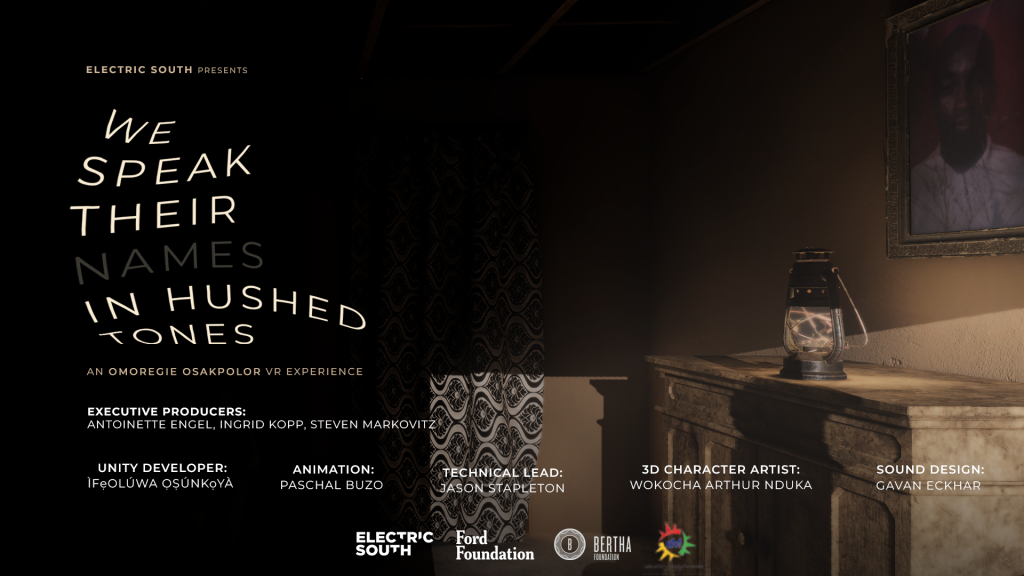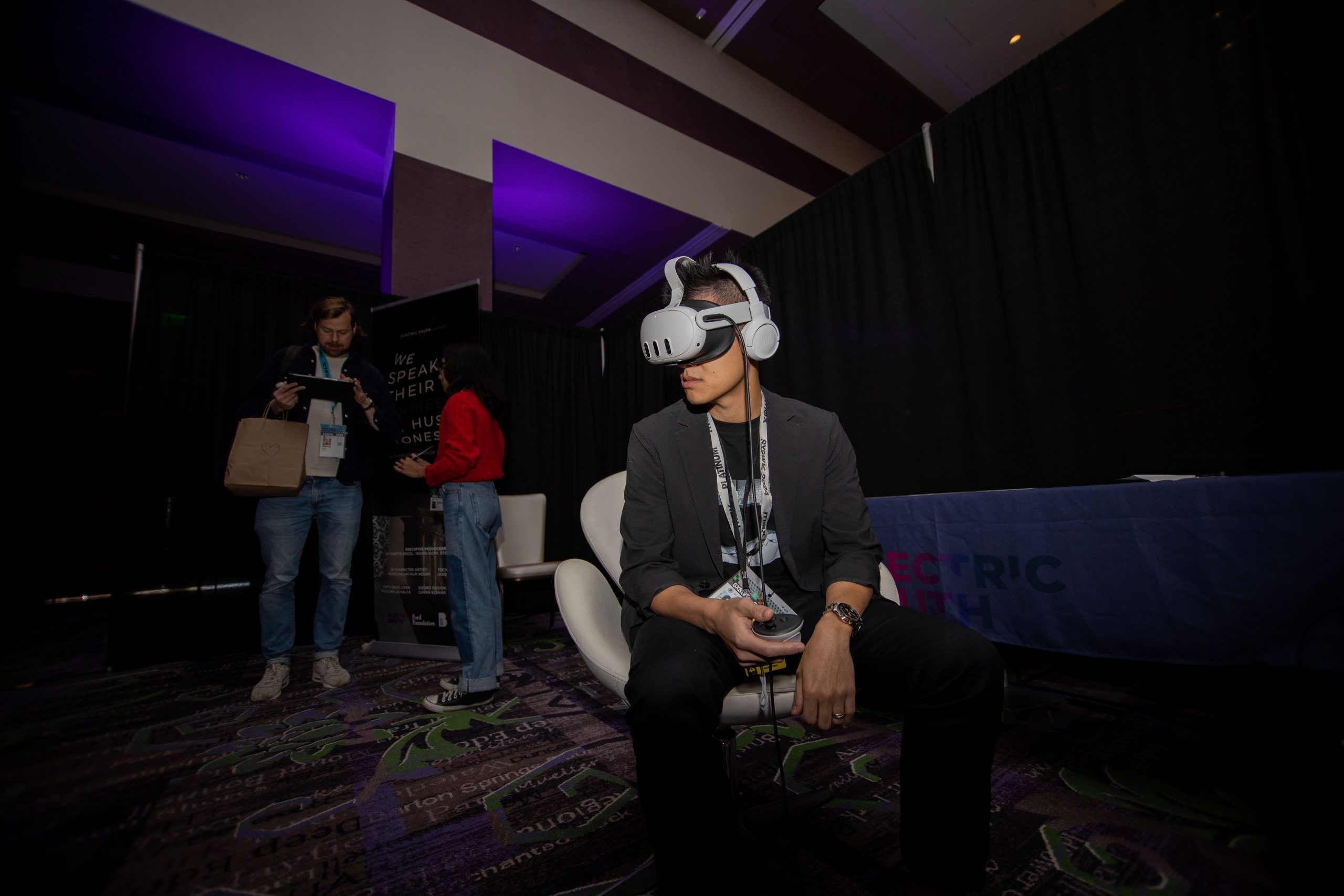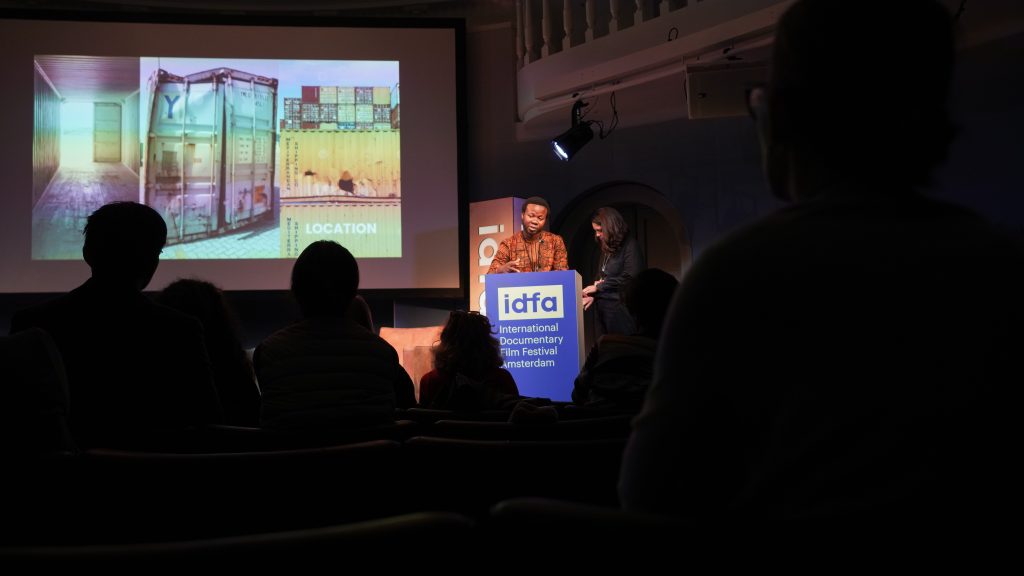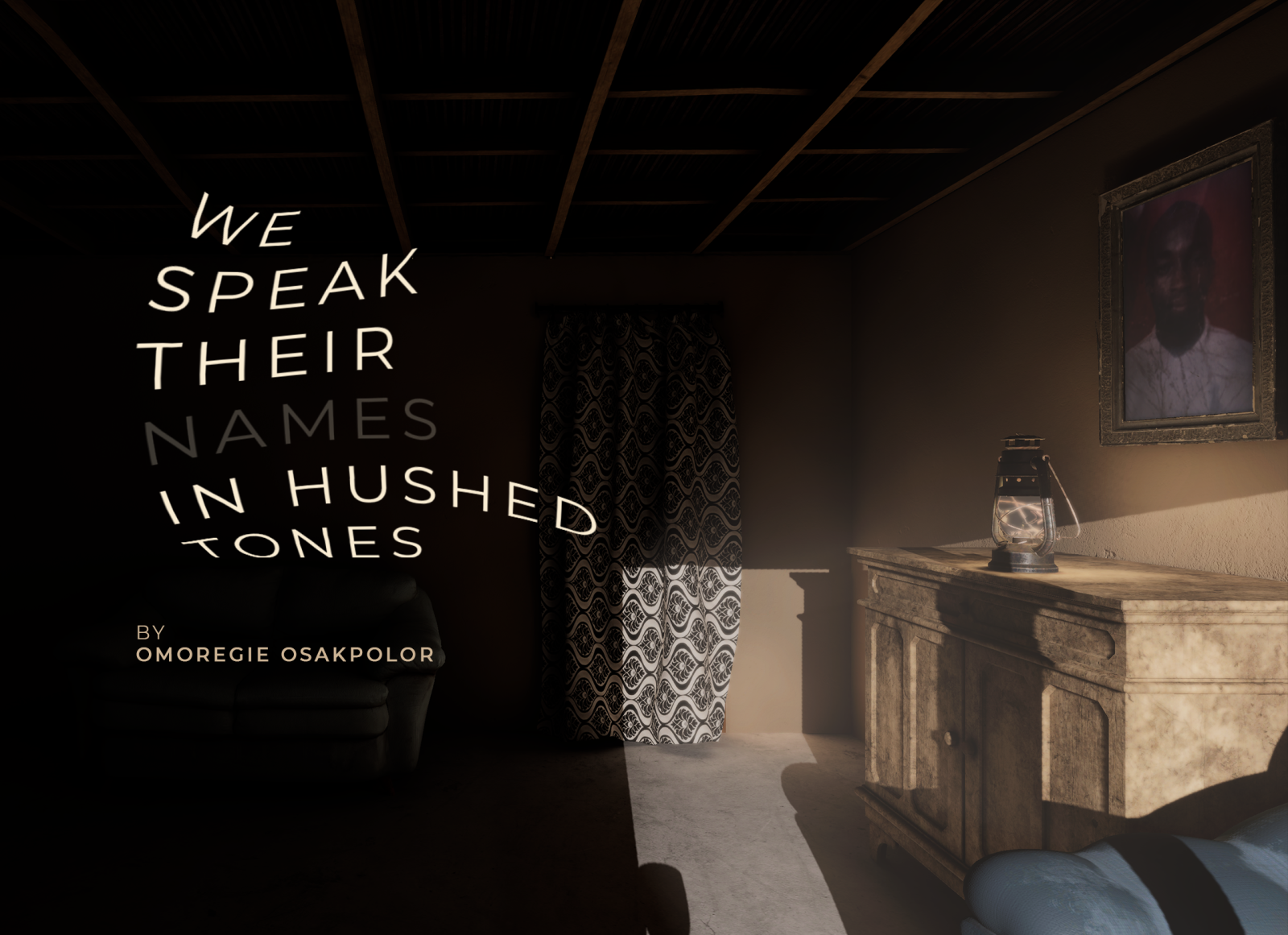There is a silence that lingers in the homes of those left behind. A silence heavy with grief, unspoken fears, and the unrelenting hope that one day, a missing loved one will walk through the door again. For many families in Benin City, this silence is beyond metaphorical, it is a haunting, an absence that stretches across years. It is this silence that I chose to break with my photography and VR art installation on missing migrants, We Speak Their Names In Hushed Tones (WSTNIHT), a story that must be told now more than ever.

Nigeria is currently experiencing an exodus like never before. The “Japa” wave, our local slang for the often desperate move to leave the country, has gripped a generation. Young men and women are willing to abandon everything in search of opportunities abroad, often without legal pathways, risking their lives in the process. This is not a new phenomenon. It is a cycle that has repeated itself for decades, but with increasing economic hardship, insecurity, and disillusionment, the desperation has reached new heights. A 2022 survey by the Africa Polling Institute revealed that 69% of Nigerians would relocate with their families if possible.
For many in Edo State, irregular migration has long been a brutal reality. Families sell their land, borrow money, and exhaust every resource to send their children on perilous journeys to Europe. The dream is simple: a better life. The reality, however, is anything but. Thousands never make it, their fates lost to the Mediterranean Sea, to human traffickers, or to the unforgiving detention centers in Libya.
Between 2014 and 2024, over 24,506 deaths were documented in the Central Mediterranean, a primary route for migrants departing from Libya to Europe. The true toll is likely even higher due to unreported cases. While it’s difficult to determine exactly how many of these were from Edo State or Nigeria, the number of families waiting back home paints an alarming picture. Without certainty, without closure, they hold on to the fragile hope that their loved ones are out there somewhere, alive.
I come from Benin City, where so many families have a story of someone who left and never returned. My own family is no exception: two of my cousins have been missing since 2016 and 2018. And some friends I knew as a child have been missing too. Did they get to Europe? Did they die on their way? Are they somewhere and don’t want to come back home? Are we ever going to see them again? I don’t know. We no longer speak their names loudly at family gatherings, not because we have forgotten, but because we do not know how to grieve someone who may still be alive. The waiting is endless; the absence is suffocating. It is this pain that my work seeks to capture.
My project, WSTNIHT is an act of documentation, an attempt to give a voice to those who are too often overlooked. Through virtual reality, photography, and sound, I want audiences to step inside the rooms of these grieving families, to hear their stories, to feel their anxieties and heartbreak. This is not just about those who have left, it is about those who remain, trapped in an emotional limbo with no resolution.
Internationally, we hear the statistics: thousands of migrants lost, drowned, detained. But statistics do not capture the anguish of a mother who sets a place at the dinner table for a son who will never come home. They do not capture the rituals of hope, endless visits to pastors, diviners and seers in search of answers. They do not capture the psychological toll, the quiet suffering that seeps into daily life.
WSTNIHT has been years in the making, and I am honoured that it has received recognition on international platforms; from the Venice Production Bridge Market at the Venice International Film Festival, to the IDFA DocLab Forum Pitch Award, to SXSW Film and TV Festival in Austin, Texas. Yet, the most important audience for this work remains those who live these stories daily. The families in Benin City in particular, and families across Nigeria. The young people are still considering the journey. The policymakers who must understand that migration is more than just statistics or economic opportunities, it is about human lives.

We must ask ourselves difficult questions: Why is leaving the only viable path for so many Nigerians? What are we doing to create a future where people no longer feel compelled to risk their lives? How do we support the families left behind, grappling with the unknown?
I do not pretend to have all the answers, but I do know this: we must listen. We must acknowledge the trauma, the loss, and the enduring hope that defines this crisis. My art is just one way to start that conversation. The silence must end.

Editor’s note: Join Omoregie Osakpolor at the Victor Uwaifo Creative Hub in Benin City, Edo State, for We Speak Their Names In Hushed Tones, a photography and VR art installation that shares the stories of families of missing migrants. Presented in partnership with the International Organization for Migration (IOM) Nigeria, this exhibition uses art, storytelling, and community conversations to highlight their experiences and offer practical information about safe and legal migration. Whether you’re a student, creative, trader, traditional ruler, or simply curious, you’ll find a welcoming space to learn, share, and connect. Be part of this important conversation from March 25 to April 1, 2025. (Email speaktoomoregie at gmail dot com for details)




1 comment
This is great.
Comments are closed.